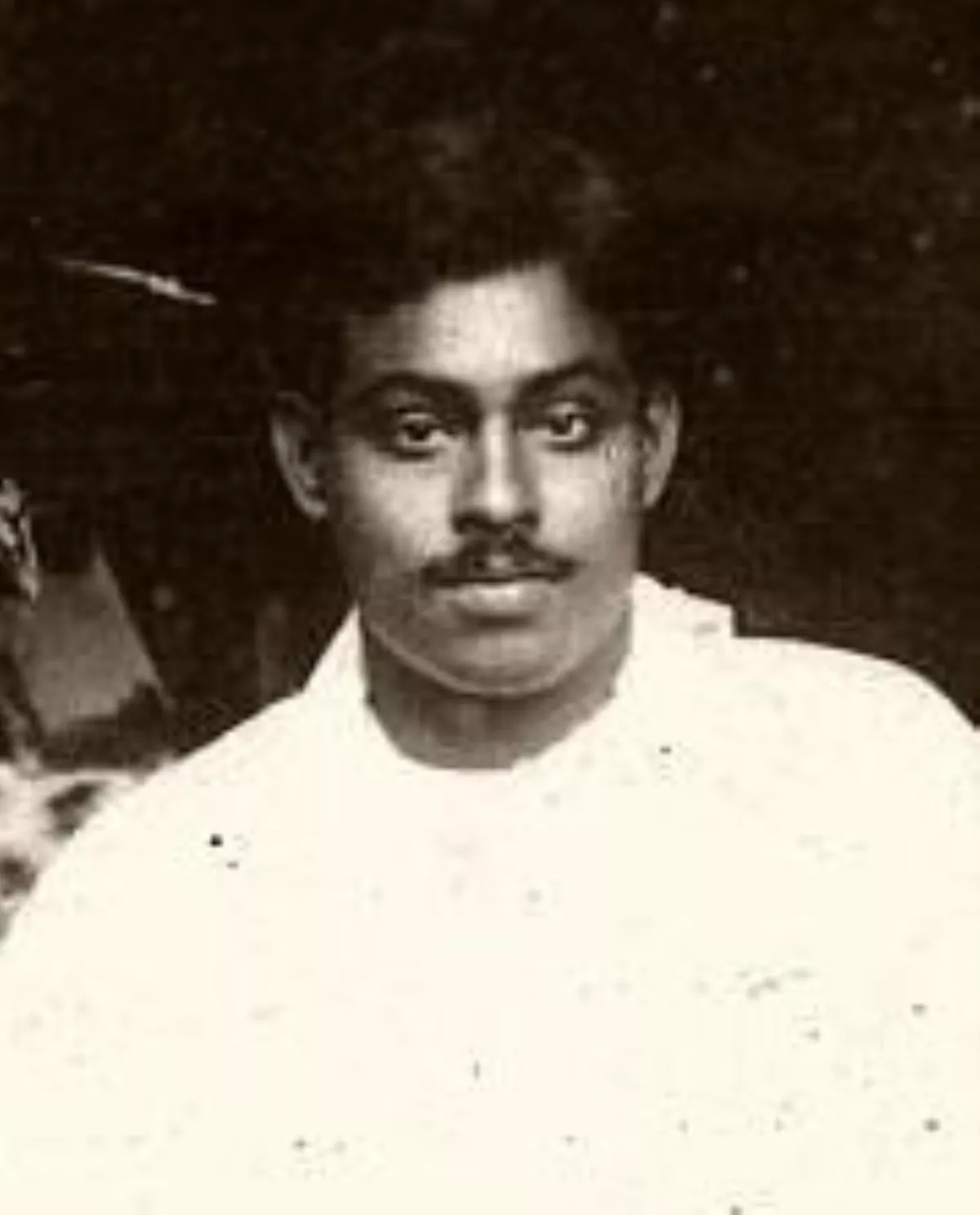 1.
1. Mukul Chandra Dey was one of five children of Purnashashi Devi and Kula Chandra Dey.

 1.
1. Mukul Chandra Dey was one of five children of Purnashashi Devi and Kula Chandra Dey.
Mukul Dey was a student of Rabindranath Tagore's Santiniketan and is considered as a pioneer of drypoint-etching in India.
The entire family of Mukul Dey had artistic talents, the brother Manishi Dey was a well-known painter, and his two sisters, Annapura and Rani Chanda, were accomplished in arts and crafts as well.
Mukul Dey was married to Bina Roy, who was from Khanakul, Bengal.
Mukul Dey was the first Indian artist to travel abroad for the purpose of studying printmaking as an art.
At Yokohama Rabindranath Tagore and Mukul Dey lived as guests of Japanese silk-merchant Tomitaro Hara at his famous residential complex Sankeien, enjoying a rare opportunity to study classical Chinese and Nihonga style Japanese paintings.
Mukul Dey then travelled to America from Japan in 1916 to learn the technique of etching under James Blanding Sloan and Bertha Jaques in Chicago, to whom Dey was introduced by American artist Roi Partridge and his wife Imogen Cunningham.
Mukul Dey remained a life-member of Chicago Society of Etchers.
On his return to India in 1917, Dey concentrated on creating etchings as a fine art.
Mukul Dey supported himself through making portrait drawings of the rich and famous, and turned these into etchings.
In 1920 Mukul Dey travelled abroad for the purpose of study, this time learning etching and engraving under Frank Short and Muirhead Bone.
Mukul Dey studied at both the Slade School of Fine Art and the Royal College of Art in London.
At Slade School of Art Mukul Dey was a student of Professor Henry Tonks.
Mukul Dey's work had already been shown at the Royal Academy and the New English Art Club.
Mukul Dey then told Szukalski of his desire to venture into Paris, to "finish his study", despite the extreme disapproval of this decision by Mukul's mentor, Tagore.
Mukul Dey chose an essentially Western medium to portray various sides of Indian life.
Unlike artists such as Haren Das, whose woodcut printing technique was more indigenous to Indian culture, Mukul Dey concentrated on drypoint etching, a thoroughly European practice.
Regardless of his adopted Western technique, Mukul Dey chose subjects such as river scenes in Bengal, traditional baul singers, the markets of Calcutta, or the life of Santhal villagers in the Birbhum district, near the Santiniketan art school.
In 1925, Mukul Dey published a book on the cave paintings in Ajanta and Bagh, which he cherished and used as an inspiration.
Mukul Dey later published and illustrated various other books during his career.
Mukul Dey was appointed the first Indian Principal of the Government School of Art, Calcutta, in 1928.
Since Mukul Dey was committed to imposing an Indian identity on the then British-controlled art establishment, he quickly drove teachers too closely linked with Company School painting out of the institution.
Gracefully drawn images of Bengali villagers executed in dry-point have become what Mukul Dey is most associated with.
Mukul Dey is remembered for his portraits of various Indian personalities, including members of the Tagore and Tata families, Albert Einstein, and Mohandas Karamchand Gandhi.
Mukul Dey depicted lesser known personalities, such as Josephine MacLeod, the promoter of Swami Vivekananda's Ramakrishna order at Belur Math.
In contrast to his more steady brother Mukul Dey, Manishi travelled tirelessly throughout India.
Mukul Dey's works are found in the collections of the Victoria and Albert Museum, London, the Indian Museum, Kolkata, the National Gallery of Modern Art NGMA in Mumbai, and the National Gallery of Art, New Delhi.
The Mukul Dey Archives are housed at Mukul Dey's former home, named Chitralekha, at Santiniketan.
Mukul Dey was the illustrator for many book projects, one of his earliest was a scholarly book Shantiniketan Bolpur School of Rabindranath Tagore, which he illustrated for the later Nobel Prize winner in 1916.